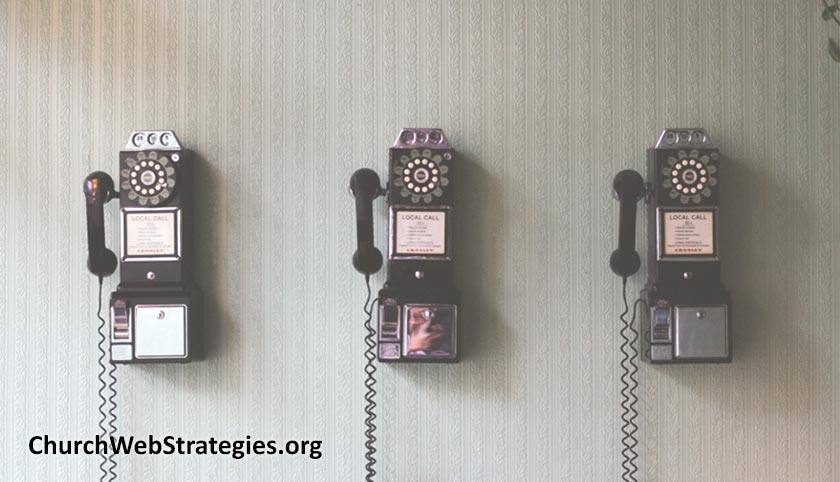Do your website and social media posts sound more like a megaphone or a telephone? Megaphones are devices to communicate with the masses. Yet they lack that personal touch. What can your church do to have more interactions that resemble a telephone? Read on and find out how to make your content connect on a personal level.
Announcements are a necessary evil of getting the word out about events at your church. You cannot get around it. Yet there are ways you can be more effective. The most common way pastors communicate is to make announcements after the service. But after two or three items, interest begins to wane. The same thing happens with your website and social media channels. If all you do is broadcast, people soon tune you out. So where is the balance in this? How can you sound less preachy?
Be Selective
When possible, target what visitors see your announcements. Platforms such as Facebook can target specific demographics with advertisements. Furthermore, a platform like Google Adwords targets ads based on keyword searches. You can also target based on where they are on the website. For example, consider announcements for your Summer Vacation Bible School. While someone visiting your mission outreach may have children, your best bet is to show these in your youth ministry pages. Hopefully you see how you can reduce the noise and increase effectiveness by moving content to targeted areas.
Get Interactive
Make it a point to not just broadcast in one direction. An easy way to get interaction is to ask questions. What is your favorite worship song or hymn? What youth group activity does your teen crowd enjoy? Ask people to comment on your posts with their answers. Another way is to ask them to “like” or “favorite” your content. As I will discuss next, the best action request is to share. Regardless, do not just blast out event notices. Request interaction from your audience.
Encourage sharing
Your audience sharing content is a superb way to boost interaction. It is also a way to boost the reach of your content online. As I said in my article “Crowdsourcing Your Church’s Popularity“, your audience can be your advertisement engine. Of all the content you can share, images are by far the best. Combine a nice photo with some text to have a big impact. One good example would be Images that hint of a testimonial. An example would be a photo with the text “Share if God helped you recently”. This gives your audience a way to share their faith in a not so “churchy” way with their friends.
Move from Public to Private
The easiest way to get a deeper personal connection is to move the conversation to a private channel. If you want your audience to share content, have them share something that will help spark this. For example share a photograph with text that might start a deeper conversation. Something like “Message me if there is something I can pray about for you” is a good example. This will get the conversation from megaphone to telephone in a hurry. It starts those personal conversations that advocates of online ministry boast about. Members of your church can soon disciple and minister to people around the world!
Action Item
Do not just use your website and social media platforms to notify your audience of upcoming events. Start conversations. Be intentional about moving those conversations to one-on-one settings. Perhaps host a workshop to get a core group of volunteers to start accomplishing this. Include a piece on Internet ministry in your next discipleship class. This is where Internet ministry can truly take place. The opponents of using the web to minister to people often fail to see these transformations. When these conversations do occur, note them. Do not disclose personal details. But let your leadership know that your church’s actions online added another person to the body of Christ.
This article was partly inspired by the Social Media Church Podcast, Episode 100
Photo courtesy of Pavan Trikutam

